
Hello and welcome to the Episode 7 of the What China Wants podcast.
We in the West are so used to looking at maps from our point of view, with either Europe or the US in the centre of the page. What’s more, we always look at them with North at the top and South at the bottom.
This gives us a certain idea of the world, and one that isn’t necessarily shared by everyone. In the map below, you can see China with the map altered so that the ocean is the main point of focus. Taking this perspective, it is easy to see why Beijing looks at the Pacific as vital to its security - and why it is making strong moves to further its control there.
In today’s podcast we are joined by Alex Neill, an expert on China and the security of the Pacific, as we ask what China wants with the region.
Our main points:
The western Pacific is strategically vital for China, for example as a conduit for trade but also as a way to project its power and not be hemmed in by the US.
Beijing is investing in a military that can theoretically be a major presence in the Pacific, but it is also investing heavily in parallel economic and political initiatives too.
China has a track record in obfuscating its true intentions, so we should be careful about believing all the messaging when it comes to their Pacific aspirations.
You can also listen to the podcast on Apple, Amazon, or Spotify.
As always please do share, comment, and subscribe. We’ll be back next week.
Many thanks for listening.
***
Here is the transcript:
Sam Olsen: "China will always be a good friend of Pacific Island countries, no matter how the international situation changes", said Xi Jinping at the end of May this year. Furthermore, he said, "China is willing to work with Pacific Island nations to build a community with a shared future".
So Stewart, that is a very clear statement of intent regarding the Pacific from a Chinese point of view, wouldn't you agree?
Stewart Paterson: Well, it sounds like it to me, Sam. But fortunately, our listeners don't have to take my word for it, because we're being joined by a real expert today on Pacific security issues, Alexander Neil. Welcome, Alex.
Alex Neill: Thank you, Stewart, thank you, Sam.
SP: Alex worked for the British and US governments in his early career, focusing on the Asia Pacific security concerns and from 2005, he served as the head of the Asia Security programme at RUSI, that's the Royal United Services Institute for Defence and Security Studies. based in London. There he developed a programme of research focusing on British policy concerns towards Asian security. He coordinated several projects in Asia, including high level dialogues in Beijing, Pyongyang, Taipei and Tokyo.
He's a graduate of SOAS, he's a fluent Chinese linguist, and he's much published on Chinese security issues. But his interests are much broader than that, including counterterrorism issues in Asia, deterrent studies in Asia and cybersecurity. And for seven years through to 2020, he was the Shangri La Dialogue Senior Fellow for Asia-Pacific security at the International Institute of Strategic Studies in Singapore, responsible for delivering the agenda and research products for the Shangri La Dialogue Summit, which is the defining summit in in Indo-Pacific security issues, particularly on China.
So Alex, maybe I can just kick off with a question, which is, how do you define what the Pacific is from China's perspective? And why is the Pacific so important to China?
AN: Well, thank you very much, Stewart, and it's a great pleasure to be joining this podcast today. I think the best way that I like to frame China's strategic perspective when it comes to the Pacific is actually to look at a map of China, but to actually flip it upside down. What you get is a very large continental power, which is hemmed in, in many ways geographically. To its north, by mountains and deserts, the Gobi Desert and Mongolia, but to the south, it's actually constrained in a maritime way, by the so-called 'first island chain' or the Pacific Rim of fire, which comprises Japan, Taiwan, and then down towards the Philippines, that's known in the strategic community as the first island chain.
The second island chain is where China's strategic ‘over-the-horizon sight’, if you like, meets Micronesia, it meets Oceania, and it meets the South Pacific. That is where new strategic rivalry is taking place in the Pacific. So, I would encourage our listeners to get a globe, flip it around, and have an idea of how China actually sees its maritime outreach and its strategic interests towards the Pacific.
SO: We'll put that map into the show notes so everyone can have a look.
AN: Great. So, over the last couple of decades, China has stated very clearly its aspiration to become a 'blue ocean', or a 'blue sea power', and the ability to project power and to preserve its own interests increasingly, into the Pacific region. And that is why Oceania and the South Pacific has become such an important area of competition between China and particular Western interests in the region, but also, of course, the interests of the people in the countries who actually are there.
There are questions of diplomatic recognition, there are military deterrence questions for China in this area and also its geo-strategic gambit or geo-economic gambit, the Belt and Road Initiative, the Global Development Initiative, that's starting to rub up against Western interests in this region.
SO: Alex - Stewart and I have spoken about this in previous podcasts, but we think that there are three reasons why the Pacific is so important for China and it would be great to know whether you agree or not. The first one is it is a gateway to China and it's vital for their trade and all their imports and exports. Secondly, it is because by dominating the western or the south Pacific, they get to cut off Australia from America and interrupt that flow there. And then the last reason is because if they can control the first island chain, that means that they are much more able to project power into the Pacific, and in so-doing extend the defensive line away from their shores. Would you agree with those three points?
AN: I think that's very fair. Traditionally, we've been quite preoccupied with the idea of the Malacca Strait and bottlenecks along the Indonesian archipelago. But as China builds links with South America, for example, with Latin America, places like Oceania are strategically fundamentally important for China.
And so, developing new maritime access through this region as an important junction where sea lines of communication intersect, and also, where digital infrastructure is being built out as well, I think this area is fundamentally important for China. It's also part of the sort of South-South concept in terms of Beijing's willingness to court the developing world, in Oceania. And so part of the narrative is, or at least Xi Jinping's narrative is to offer a model of governance and geo economic opportunity, which hasn't been offered in this way before.
SP: How is this China’s interest in the Pacific Islands manifesting itself? Our listeners will probably be aware that China has just launched a third aircraft carrier, is that of big significance? Is that something that we should be worried about?
AN: Well, I referred earlier to the ‘blue water capability’ that the People's Liberation Army Navy is aspiring towards. The new super carrier is similar in scale to a Nimitz class carrier of the US Navy, and its displacement is very significant, I think, at 80,000 tonnes. It doesn't have this ski ramp take-off configuration on the carrier, it's got an electromagnetic catapult. So it's really demonstrating catch-up capabilities with that of the US as a naval superpower.
The previous two aircraft carriers are actually more or less experimental platforms, or at least training platforms. But really, this carrier represents China coming of age, and its ability to project power out into the Pacific Ocean and the intent to do that. Taking a carrier strike group out into the Pacific to back up its interests in the South Pacific is something that this aircraft carrier will be doing in the not-too-distant future.

SO: So Alex it's interesting you mentioned about the catapult system there, because as you probably saw, there are lots of allegations that China was able to develop that catapult technology using technology that it gleaned from a British company called Dynex that a Chinese company bought a few years ago, and which observers have said was instrumental in the development of many technologies to do with the Chinese navy.
But going back to your point, just to be clear, what you're saying is that it's not just about the aircraft carriers, though, it's about Xi Jinping going to the Pacific and saying, "we've got a new system of governance, and we're going to give Belt and Road Initiative funding as well". So, with all that in mind, when does the Solomon Islands announcement that was made recently come in? Is this a purely military thing? Or is it something that encompasses all those different points of China trying to extend its influence in the Pacific?
AN: Well, the Solomon Islands has recently refuted or rebutted accusations that the Solomon Islands will be used as a basing, a lily pad, if you like for the People's Liberation Army Navy. The PLAN may not build a base there, but I think dual-use utility is really important here.
And when you refer to the catapult technology, on the aircraft carrier, the Chinese military over the last two decades has become very adroit at acquiring dual-use technologies and putting them into a military platform. So this may be an example of a very successful dual-use capability and China's ability to evade sanctions like the EU arms embargo for example.
I think when it comes to port access, this is very much part of the Solomon Islands security agreements. And this gives geographical reach to China, it doesn't necessarily have to have a fully-fledged military base built on the Solomon Islands. But if there's a deep-water port capability, and the right size of berthing, then you could get an aircraft carrier in there, much in the same way as Guam is a hub for the US Navy in the South Pacific. So very much a dual-use capability, possibly under development with this security agreement.
If you look further afield, to Djibouti, for example, China's narrative initially about China's garrison, which is what it really is now, at the mouth of the Red Sea, was that it would be a replenishment base, a logistics hub for the increasing naval operations by the PLA Navy in that part of the world. But then over time, with satellite imagery and closer scrutiny of that base, it was very apparent that it's a sophisticated bastion for China, in that part of the world.
So I wouldn't rule out China talking about replenishment and logistics and dual-use, but over time, the possibility of actually building infrastructure for dedicated use by the PLA Navy. We've also seen recently, the Ream Naval Base Development in Cambodia and China rebuilding that out and clearly that will have dual-use capabilities for the PLA Navy too.
SP: Alex that's really interesting that you mentioned the Cambodia base because is there a strong parallel and similarity in the tactics that China can be expected to use or is using in the Pacific Islands vis-à-vis what has happened in the South China Sea, with China's desire to gain access to the Indian Ocean, the Gulf of Thailand, and to alleviate the pressure on the Malacca Straits. Is it the same strategy being rolled out across the world?
AN: Well, China is pretty good at obfuscation when it comes to its core interests and security interests. So initially, there might be talk of the need for civilian utility, so things like maritime domain awareness, humanitarian assistance and disaster relief, that kind of softer end of maritime capabilities. And then over time, it becomes part of a dual use narrative. Eventually, you might see an actual fully functioning military base, crystallising in this part of the world.
If you look at China's aircraft carrier programme, initially - and I'm talking about at least 15 years ago, 20 years ago - there was flat out denial that China was going to build aircraft carriers. But I remember once visiting a strategic think tank in Beijing and seeing a scale model of the Liaoning aircraft carrier in a glass box. And I thought, 'well, I don't think these aircraft carriers are just going to be purely conceptual'. And within a few years, we saw the Liaoning launched, which was a kind of refurbished Varyag hull, interestingly, built in Ukraine, and headed up from the Black Sea and got completely overhauled and became China's first aircraft carrier.
But this latest one is really something to behold. And I think it's important to put aircraft carriers also into the context of military diplomacy, and increasing your footprint in remote places. That's certainly what the US Navy does, and recently, the Royal Navy, with the mission by the HMS Queen Elizabeth, heading out to the Indo-Pacific region, I think that's another example of how military diplomacy and increasing your footprint and possibly even defence sales is all part of the equation. That's how aircraft carriers can be used in a non-lethal way if you like.
SO: Well, just talking about obfuscation, I was smiling when you were saying about denial about aircraft carriers, because it reminded me of the fact that China said that they didn't have any intent to do anything with the Ream port in Cambodia. And then when it broke ground a few weeks ago, it was it was opened by the Chinese ambassador.
AN: Yes, that's right - and the Cambodian Defence Minister has recently been swimming in the sea with I think the Chinese ambassador who opened up that bas. So yes, the turnaround from rejection of any hint of building infrastructure to the actual materialisation of the reality was quite quick in the case of the Ream base. But these things often take time. China is very adept at having a kind of malleable narrative about how it's developing these capabilities.
And I think we also shouldn't forget that the People's Liberation Army is the armed wing of the Communist Party. So it's not a National Defence Force in the way that you'd think of them in western democracies.
SO: Going back to Stewart's point about the parallels between the South China Sea and the Southwest Pacific, you mentioned about the aircraft carriers. But funnily enough, the Chinese have been talking for a while now about how they've got carrier killer missiles, and that they have put in place what's called the A2AD, which is basically the area denial mechanisms to stop any American or allied forces being able to operate in the western Pacific if there was a clash. So it does seem slightly weird or ironic that the Chinese having said that no carriers could operate because they're so good at missile technology, have then built their own carriers.
With regard to the South China Sea, and the islands there, they are being used as sort of basis, perhaps sort of fixed aircraft carriers, if you will. What do you think the planning is with China? Are we looking at these as being military outposts to deny the areas to the Americans and their allies in case of war? And if so, do we think that they're going to try and replicate that in the western Pacific to in essence, take away those areas from the allies if there was a clash over Taiwan, for example, what do you think we do early in that story to be able to tell?
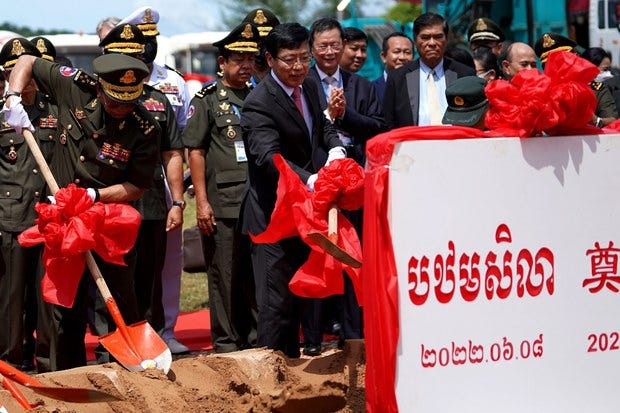
AN: Well, I think the big difference between the South China Sea and the South Pacific is that China claims a very large swathe probably two thirds of the South China Sea as its own maritime sovereign territory. it views the sea space within what's called a 'nine dash line', which extends from the southern tip of Taiwan, down through the South China Sea, along the maritime periphery of Vietnam, and then it loops back along the coast of Borneo. It's a large appendage, or a tongue of maritime space, which China views as a Chinese lake, and that's a term that's been used in the past.
What the terraforming does, the creation of these artificial islands, is it substantiates that claim by creating terra firma, so to speak, on these coral atolls, and the 'nine dash line' suddenly becomes perhaps more enforceable. So eventually, you might come across a scenario where maritime traffic transiting the area, do so at the tacit behest of Beijing. When it was apparent that these naval and air bases were being built in the South China Sea, very early on US military planners and strategists said that these island bases were inherently vulnerable. Something that popped into my mind was, you know, this idea of a sort of maritime Maginot Line, something that in peacetime looks quite impressive, but in wartime, would have little utility.
But I think what China is, is very good at as well is talking about the civilian utility of these islands, and the so-called grey zone tactics moving into the grey zone below the threshold of war to saturate the South China Sea with Chinese presence. And that's what's happening. Now, it's not just the Navy, its maritime and border enforcement, the maritime militia, all those sorts of agencies, which are saturating this part of the South China Sea.
SP: Alex, it's interesting that you mentioned the maritime militia there, because our listeners are probably aware of the fact they might have heard on the news that China has been warning the United States, but other countries, too, that the Taiwan Strait is its sovereign water, its territorial water, not international waters, as is claimed by others, and under new law that allows their coastguard freedom of action in the Taiwan Strait. Do you see that as being a very significant step? And what should the rest of the world be doing about that?
AN: Well, I think part of this ratcheted approach by Xi Jinping and the Central Military Commission to say that from China's perspective, and if we return to that map concept that I described earlier, the Taiwan Strait, I think has always been viewed as China's maritime territory and China's outer periphery, if you like, is the east coast of Taiwan. So anything inside that off the west coast of Taiwan, namely, the Taiwan Strait, is China's maritime territory. I think conceptually, that's always been in the mind's eye of Chinese military planners. But what they've done now is they've said it.
And in recent months and years, we've seen US freedom of navigation operations transiting the Taiwan Strait, in what is viewed and is international waters, There's a median line through the middle of the Taiwan Strait, and Taiwanese forces as well as the People's Liberation Army are very careful not to cross that median line. But to say that the entire Strait is Chinese maritime sovereign territory is part of a ratcheted approach towards the eventual goal of reunification with Taiwan, and that's what's been in the news in recent months. It's a very, very contentious question, and it begs the question of preparedness of the United States to intervene under the Taiwan Relations Act. And indeed, countries like Japan as well, because Taiwan has been publicly stated as part of Japan's national security calculations now.
SO: Great, thank you so much, Alex, that was very interesting indeed. I suppose for me, the key takeaways are first that we've got to look at the Pacific from the Chinese point of view, as a continental power. And that first island chain is obviously really important to them and hems them in; you can see it quite clearly, if you look at the map the other way around. Secondly, in the Pacific, they're not just looking at the security, the pure security element, but they've got the political outreach, and the economic outreach, et cetera, and that all falls into the category of Chinese influence. And thirdly, is that the South China Sea and the aircraft carriers and their position in the West Pacific, they all come down to China really preparing itself to be a much stronger military power, whether that's got anything to do with Taiwan moving forward or not.
So thank you very much. Stewart, have you got any other final points you want to add?
SP: I would just like to thank Alex very much indeed, for his time. And I think we should have him back, Sam, in order to talk about the power transition in China.
SO: Yes, good idea. Alex, you and I have spoken about that before, so you should have quite a lot to say.
AN: Yes, that's right Sam, we've had long conversations about this. But thank you very much to you both for hosting me today, and it's a great pleasure to speak to your audience. I look forward to having another conversation with the approach of the 20th Party Congress coming up at the end of this year.
SO: Great. Thanks very much, Alex. Goodbye.
AN: Thank you.






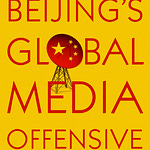
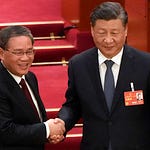




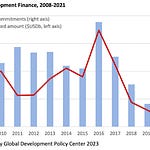
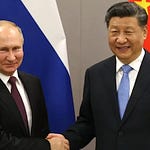
Episode 7: Why the Pacific Matters to China